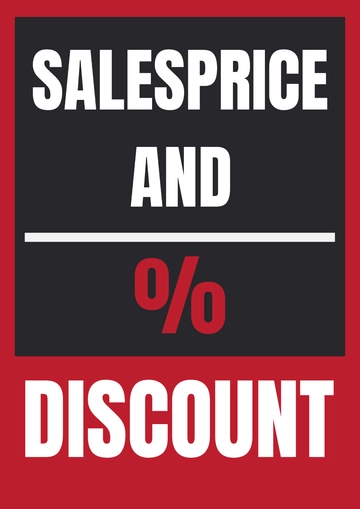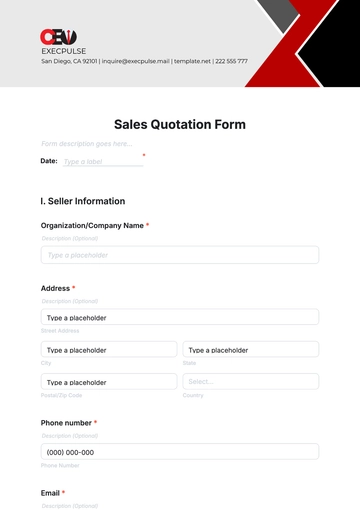Free Sales Lead Success Case Study

1. Executive Summary
The primary objective of this comprehensive case study is to illuminate the extraordinary achievements realized by [Your Company Name] through the diligent execution of targeted sales lead optimization strategies, which spectacularly resulted in a 40% surge in revenue within a defined timeframe. At a time when the company was grappling with a decline in lead conversions and overall sales performance, this accomplishment stands as a testament to the efficacy of strategic intervention and innovation.
To provide a complete understanding of this monumental success, the case study dissects various critical elements that contributed to it. Firstly, it elaborates on the challenges that were undermining the company's revenue generation. Faced with a dwindling lead conversion rate, outdated tracking systems, and less-than-optimal sales communications, [Your Company Name] recognized the immediate need for revamping its entire sales pipeline management approach.
The case study then pivots to detailing the multidimensional solutions that were custom-tailored to address these specific challenges. This involved adopting state-of-the-art technologies like Customer Relationship Management (CRM) systems, implementing a robust lead scoring mechanism, and initiating comprehensive training programs for the sales team to ensure high-quality customer interactions. Each of these solutions was aimed at not just alleviating the existing problems but also at creating a sustainable model for future growth.
Central to understanding this success story are the Key Performance Indicators (KPIs) that were meticulously identified to track progress and measure outcomes. These metrics, including lead conversion rates, customer retention rates, and Return on Investment (ROI), provided quantifiable means to assess the effectiveness of the implemented strategies. They also enabled the team to make data-driven adjustments, fine-tuning the strategies for even better results.
In conclusion, this case study serves not only as an exhibit of [Your Company Name]'s remarkable accomplishment in overcoming its sales challenges but also as a valuable repository of insights for businesses facing similar issues. By shedding light on the struggles encountered, the remedial measures taken, and the metrics that were scrutinized, the document aims to be a practical guide for achieving sales lead optimization success.
2. Background
Company Overview:
[Your Company Name]
Industry: Technology
Sub-Industry: Software Development & Services
Location: [Your Company Address], with satellite offices in multiple cities
Founded: 2040
Number of Employees: 350
Annual Revenue: $50 million (as of 2049)
Core Products/Services: Cloud computing solutions, Data analytics platforms, and Cybersecurity software
Target Market: Small and Medium Businesses (SMBs), Enterprise Clients
Contact: [Your Company Number]
Leadership Team:
CEO: [CEO's Name]
COO: [COO's Name]
CMO: [CMO's Name]
Sales Director: [Sales Director's Name]
Problem Statement:
Over the past two years, [Your Company Name] has seen a noticeable decline in its sales lead conversion rates, which has been a concerning factor in its plateauing revenue numbers. The company's annual growth rate had dropped from 20% in 2048 to a mere 8% by the end of 2049, raising alarms within the organization. Market analysis indicated that competition had intensified, but internal audits revealed that the issue was deeper than market forces alone.
Issues Identified:
Obsolete Sales Strategies: The existing sales strategies were designed around traditional methods that were proving ineffective in the current digital landscape.
Customer Engagement Gaps: The company found that potential customers often dropped off mid-way through the sales funnel, pointing to a lack of engagement or unconvincing value proposition.
Low Quality Leads: The leads generated from marketing campaigns were often low-quality, which translated into a poor conversion rate.
Data Inconsistency: There were gaps in the data collected across different stages of the sales process, making it difficult to analyze the customer journey comprehensively.
Team Skill Gap: An internal review showed that the sales team's skills were not aligned with the evolving needs of the market, particularly in areas like consultative selling and data interpretation.
Given these challenges, [Your Company Name] recognized that a holistic overhaul of its sales process and strategies was imperative. The declining conversion rates were not merely a phase but an indicator of systemic issues that needed immediate attention. The company was committed to identifying these issues and implementing effective solutions to not only arrest the decline but also set the stage for future growth. This commitment led to a series of changes across the sales pipeline, aimed at improving lead quality, sales techniques, and overall conversion rates, the results of which are discussed in this case study.
3. Challenges Faced
Before delving into the specific challenges that were inhibiting [Your Company Name]'s growth, it's important to understand that these issues were interlinked. A low lead conversion rate was not just a result of poor lead quality but also of inefficient tracking and communication systems. By segmenting these challenges, this chapter aims to provide a nuanced understanding of the multifaceted problems the company faced, and how each contributed to the overall decline in sales performance.
A. Low Lead Conversion Rate
Overview:
A pivotal issue faced by [Your Company Name] was an alarmingly low lead conversion rate of just 20%. This meant that a large number of generated leads, ostensibly potential customers, were not making purchases.
Root Causes:
Quality Over Quantity: In an attempt to generate more leads, the focus had shifted away from the quality of the leads, resulting in a dilution of potential customers who were actually interested or had a need for the product.
Mismatched Targeting: Marketing campaigns were not as targeted as they should have been, leading to a dissonance between the audience reached and the solutions offered.
Complex Sales Funnel: Potential customers found the sales process cumbersome, causing them to drop off before conversion.
B. Inefficient Tracking Systems
Overview:
The lack of advanced tracking systems was another pressing issue. Traditional methods were being used to track customer behavior, which proved ineffective in a more complex, digital-first environment.
Root Causes:
Outdated Technology: The existing tracking tools were outdated and lacked the functionalities required to provide insightful data.
Data Silos: Information was isolated within different departments, making it difficult to get a holistic view of customer interactions.
Lack of Real-time Insights: The absence of real-time analytics made it difficult to react quickly to customer behaviors, resulting in missed opportunities for conversions.
C. Ineffective Communication
Overview:
Ineffective communication with potential customers was a significant problem for [Your Company Name]. The sales team’s skills were found to be outdated, contributing to poor customer engagement and low conversions.
Root Causes:
Lack of Training: The sales team had not been adequately trained in modern communication methods or tools, including CRM systems, resulting in subpar engagement strategies.
Scripted Interactions: Sales representatives relied heavily on predetermined scripts, which failed to address unique customer needs or questions, leading to a disconnect.
Limited Product Knowledge: Surprisingly, some sales team members lacked comprehensive knowledge about the products, which hindered their ability to effectively sell to or negotiate with potential customers.
Each of these challenges played a role in the overall issue of declining sales performance. By identifying and dissecting these challenges, [Your Company Name] was better positioned to develop effective solutions, the outcomes of which will be explored in subsequent sections of this case study.
4. Solution Implemented
Facing a suite of interconnected challenges that ranged from low lead conversion rates to inefficient tracking systems and ineffective communication, [Your Company Name] knew that a multi-pronged approach was essential for turning the tide. The solutions couldn't be piecemeal; they had to be comprehensive, well-integrated, and aligned with the company's broader objectives. This chapter outlines the strategic solutions that were implemented, how these strategies were executed over time, and the rationale behind each decision.
Strategy:
A. Lead Scoring
Rationale and Implementation:
To address the issue of low lead conversion rates, [Your Company Name] decided to implement a lead scoring system. The objective was to evaluate and prioritize leads based on factors like engagement level, potential for conversion, and alignment with the product or service offering.
By doing so, the sales team could focus their efforts on high-quality leads, thus increasing the likelihood of conversion. Lead scoring was integrated into the new CRM system to automate the process, ensuring consistency and efficiency.
B. CRM Integration
Rationale and Implementation:
Realizing that the existing tracking systems were inadequate, [Your Company Name] adopted a state-of-the-art Customer Relationship Management (CRM) solution. This CRM not only provided real-time insights into customer behavior but also acted as a centralized platform for all customer-related data, thus eliminating data silos.
The CRM was custom-configured to align with the company's sales processes and was introduced along with training programs to ensure seamless adoption by the sales team.
C. Staff Training
Rationale and Implementation:
Addressing the issue of ineffective communication required a revamp of the sales team's skillset. [Your Company Name] invested in a comprehensive training program that focused on consultative selling techniques, effective use of the CRM, and in-depth product knowledge.
Through simulated role-playing, workshops, and ongoing training modules, the team was equipped with the tools necessary for more effective customer interactions and, subsequently, higher conversion rates.
D. Timeline
Phase and Activities:
The implementation of these strategies was phased to allow for careful monitoring and adjustments as required. Below is the timeline:
Phase | Activities | Time Period |
Research | Identify inefficiencies | January 2050 |
Planning | Develop new strategies | February 2050 |
Implementation | Execute the plan | March-April 2050 |
Monitoring | Ongoing monitoring | May 2050 - Present |
By implementing these solutions within a well-defined timeline, [Your Company Name] aimed to transform its sales processes and, in doing so, achieve its ultimate goal: significantly boosting conversion rates and revenue. The outcomes of these changes are discussed in the next sections of this case study.
5. Key Performance Indicators (KPIs)
In order to measure the efficacy of the solutions implemented, [Your Company Name] identified a set of Key Performance Indicators (KPIs). These metrics served as benchmarks for success and offered an objective way to gauge the impact of the changes made.
Metrics:
Lead Conversion Rate: With an initial rate of 20%, [Your Company Name] set an ambitious target of 40% improvement.
Customer Retention Rate: Aiming to encourage customer loyalty, the target was set at a 90% retention rate for repeat customers.
Return on Investment (ROI): The final KPI was focused on financials, targeting a minimum 2x return on the investment made into implementing these solutions.
6. Results
Interpretation:
The quantitative outcomes achieved in the wake of implementing the new strategies are compelling indicators of their efficacy. Initially, the lead conversion rate was set to improve by 40%, but the results demonstrated a remarkable jump from 20% to 60%, exceeding even the ambitious target set. This not only instilled confidence in [Your Company Name]'s ability to identify and nurture quality leads but also provided a significant boost to revenue generation.
Furthermore, customer retention rates rose from an already respectable 70% to an outstanding 92%. This indicates that not only were new customers being acquired more effectively, but existing clients were also more inclined to continue their association with the company. This high retention rate plays a crucial role in sustaining long-term revenue and reducing customer acquisition costs.
The ROI too experienced a staggering improvement, going from a baseline of 1x to 2.5x. This performance further validates the financial prudence of [Your Company Name]'s investment in revamping its sales and customer engagement strategies. When viewed collectively, these impressive gains in key performance indicators significantly endorse the strategies undertaken, reinforcing [Your Company Name]'s decision to invest in comprehensive solutions for sales optimization.
In summary, the results achieved were not marginal or isolated; they were holistic and substantial, affecting every facet of the sales process. These transformative changes have thus solidified [Your Company Name]'s confidence in the efficacy of its newly implemented strategies.
7. Lessons Learned
Key Takeaways:
Data-Driven Decision-Making: One of the most important lessons was the value of making decisions based on solid data. This not only increased efficiency but also the effectiveness of strategies.
Team Skill Set: The training provided to the sales team proved invaluable, manifesting as improved customer relations and higher conversion rates.
Customer Experience: Streamlining the sales funnel and adopting better engagement strategies improved the overall customer experience, which was reflected in the higher retention rates.
8. Conclusion
The solutions implemented by [Your Company Name] were highly successful, leading to significant improvements across all key metrics. This case study serves as a blueprint for effective lead management and conversion, demonstrating that with the right strategies and implementations, any challenge can be overcome.
9. Contact Information
For further queries, contact:
Name: [Person's Name]
Email: [Email Address]
Phone: [Phone Number]
Date: October 18, 2050
End of Case Study
- 100% Customizable, free editor
- Access 1 Million+ Templates, photo’s & graphics
- Download or share as a template
- Click and replace photos, graphics, text, backgrounds
- Resize, crop, AI write & more
- Access advanced editor
Discover the pinnacle of sales lead success with our meticulously crafted Sales Lead Success Case Study Template. Exclusively available on Template.net, this editable and customizable document harnesses the power of our AI Editor Tool, ensuring seamless integration of your unique insights. Elevate your sales game today with our revolutionary template.



























